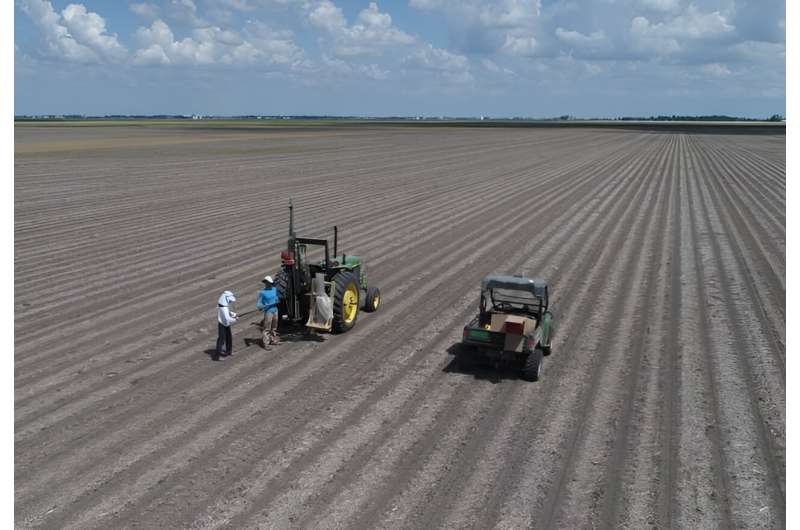This article has been reviewed according to Science X's editorial process and policies. Editors have highlighted the following attributes while ensuring the content's credibility:
fact-checked
trusted source
proofread
New method has promise for accurate, efficient soil carbon estimates

Earth's soil contains large stocks of carbon—even more carbon than in the atmosphere. A significant portion of this soil carbon is in organic form (carbon bound to carbon), called soil organic carbon (SOC). However, SOC has historically been greatly diminished by agricultural activity, releasing that carbon into the atmosphere as carbon dioxide, contributing to climate change.
To monitor and sustainably manage SOC stocks under agricultural land use, an accurate way to measure SOC is essential. However, current methods of accurately estimating SOC are resource- and cost-intensive. In their new study, published in Geoderma, Agroecosystem Sustainability Center (ASC) researchers tested a new sampling method in hopes of improving the ability to estimate SOC stocks.
The team's previous research suggested that readily available spatial information in public databases could improve the efficiency of SOC sampling in agricultural fields. This study, led by ASC's Eric Potash, a Research Scientist in the Department of Natural Resource & Environmental Sciences (NRES) at the University of Illinois Urbana-Champaign, tested that hypothesis in eight fields across Illinois and Nebraska.
Measuring SOC is challenging due to its variability. The SOC stock at two locations just a few feet apart can differ significantly. This means that many locations need to be sampled to estimate the total SOC stock, which translates to a lot of work in the lab and in the field.
"Past studies, including one that we did one year ago, proposed ways of reducing the number of samples needed," Potash said. "But it was unknown just how much more efficient those methods were. We put those methods to the test using a new high-quality dataset our research team put together."
The team found that SOC stocks in agricultural fields can be more efficiently measured by using a method called doubly balanced sampling, which accounts for auxiliary information available in elevation maps, satellite images, and previous surveys. Doubly balanced sampling is a modern strategy that improves on the classic method of stratified sampling by selecting locations that are more representative of the field in terms of this auxiliary information.
"Quantifying soil carbon stock through soil sampling is a hard and expensive task, but our approach was found to reduce the number of soil samples needed by a very promising 30 percent," said Kaiyu Guan, project lead and co-author, Founding Director of ASC, and NRES Associate Professor. "We believe this is a significant advancement for improving soil sampling efficiency and should be promoted in future practices by carbon project developers or researchers."
The work is made possible by unique field-level, high-resolution soil samples collected by scientists from different projects.
"I am glad that our hard work and collected soil sampling data enables the development of this approach," said DoKyoung Lee, another co-author and a Professor of Crop Sciences at the U of I.
The team has made its methods and data publicly available so that the scientific community can benefit from, and collaborate on, further improving the understanding of SOC.
"I am especially excited that we are publicly sharing the data for this study," Potash said. "I hope that this will foster increased collaboration to accelerate progress on soil carbon research."
More information: Eric Potash et al, Multi-site evaluation of stratified and balanced sampling of soil organic carbon stocks in agricultural fields, Geoderma (2023). DOI: 10.1016/j.geoderma.2023.116587
Provided by University of Illinois at Urbana-Champaign

















